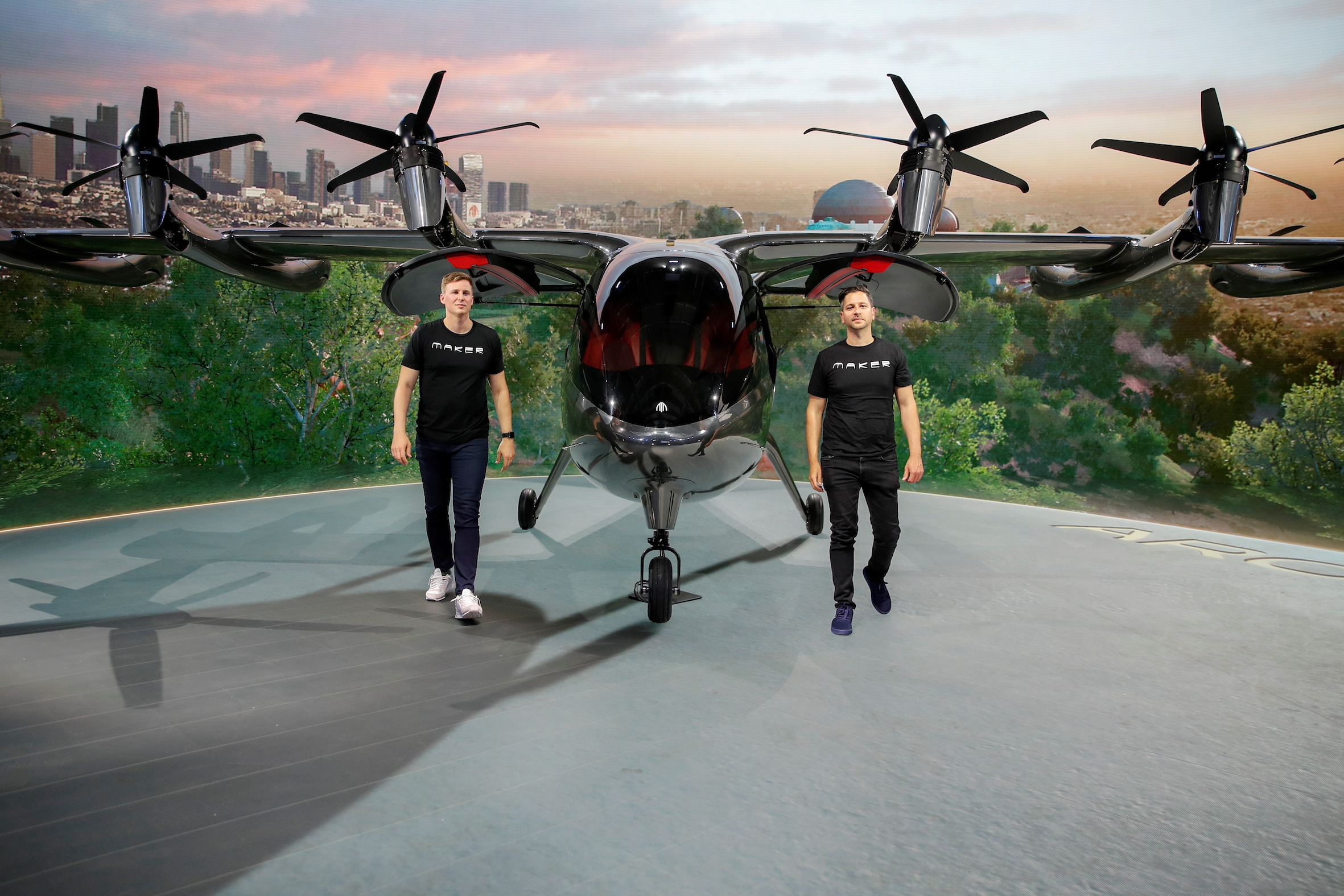Paramedics with jetpacks, border police in flying cars and city workers commuting by drone all sound like science fiction – but the concepts are part of an advanced air mobility (AAM) market that is expected to be worth as much as $17 billion by 2025.
As urbanisation leaves city streets congested and advances in self-driving technology allow for vehicles considered impossible just decades ago, using the sky for flying vehicles has become increasingly attractive.
“We can’t continue to use road transport; 3D mobility is really important,” Anna Kominik, Asia-Pacific director at Wisk, said in an interview broadcast.
Also on AF: China and US Soar Ahead in Flying Car Patent Race – Nikkei
Wisk, a joint venture between Boeing and Kitty Hawk Corp, has been testing Cora, an autonomous electric aircraft that takes off and lands like a helicopter, at its base in Lake Tekapo, New Zealand, for four years.
Wisk is liaising with regulators, including the US Federal Aviation Administration, to get approval for public use of the air taxi service, which can carry two passengers about 40kilometres plus reserves (25 miles) at speeds of about 160km/h.
Flying Cars: The Future of Air Travel
“Some 67% of the world’s population will be cities by 2030, so that ground infrastructure can’t keep up and is costly to overhaul,” Kominik said in a panel discussion recorded in November 2020. “We have to move to the sky as a resource.”
Netherlands-based PAL-V International is keeping one foot on the ground while taking to the air. Its new flying car, called Liberty, is a two-seat gyroplane, which has a maximum speed of 180km/h and a flying range of 400km, makes flight a reality and received approval for use on European roads this year.
Delivery to customers will begin in 2023 after they complete the required small aircraft training, PAL-V chief executive Robert Dingemanse said.
He added that PAL-V had already received orders for its gyroplane, including down payments, from 15 countries, and interest from 193 countries.
Kominik declined to put a timetable on when Cora would carry its first passengers. “We don’t expect we will be the first to market; we do expect to be the best,” she said.
Advanced Air Mobility: Developing an Ecosystem
The advanced air mobility market could be worth almost $17 billion by 2025 and $110 billion by 2035, according to Allied Market Research.
The same report suggests the piloted segment will hold more than three-quarters of the market share in 2025, but the autonomous flight segment will grow fastest between 2025 and 2035.
Dingemanse said he expected the Liberty gyroplane to be used for a range of applications, including pipeline observation, policing and health operations in remote areas.
Similarly, Richard Browning has already done test flights of his Gravity jetpack with militaries in several countries and emergency response personnel in the United Kingdom.
Updates to Jetpack Flying Time
With 317 pounds of thrust, the Gravity jet suit can carry a person for about four minutes. The company is working on updates to extend flying time, and Browning has built up a dataset of the jetpack’s use across 35 countries.
Kominik said the creation of an “ecosystem” of use cases was critical as the industry and jetpack aviation technology develops.
“That requires a very different mindset from government policy, regulators and community,” she said. “We have to create that, because it’s not there at the moment.”
California-based Wisk selected New Zealand because it was unique globally in allowing “beyond line of sight” trials of autonomous aircraft.
Coronavirus Impact on Flying Vehicle Development
Dingemanse and Kominik said the pandemic had helped and hurt the autonomous aircraft industry.
Sales of the PAL-V slowed as in-person test drives became restricted, Dingemanse said, but the crisis has provided a boost to the private jet industry and reinforced the human need to meet face-to-face.
“In that sense, it is an advantage to our solution, which is personal space when you’re travelling,” he said.
Kominik said New Zealand’s tight border restrictions had prevented some key personnel from entering over the past several months, but also spurred the opening of a testing site for new flying cars in Australia.
Browning is keen to return to demonstrating drones, jetpacks and flying vehicles to inspire a new generation: “Landing a 1,000 horsepower jetsuit amongst a school – with an invitation of course – is a pretty good way to stop kids from looking at an iPad for a moment.”
- Reuters with additional editing by Kevin Hamlin
ALSO READ:
Alibaba, Meituan and JD.com Aim To Deliver With Aid Of A Robot Army
Trump takes aim at Chinese drones ahead of departure
Air Taxi Startups Ready for Takeoff as Backing Soars to Record: FT





















